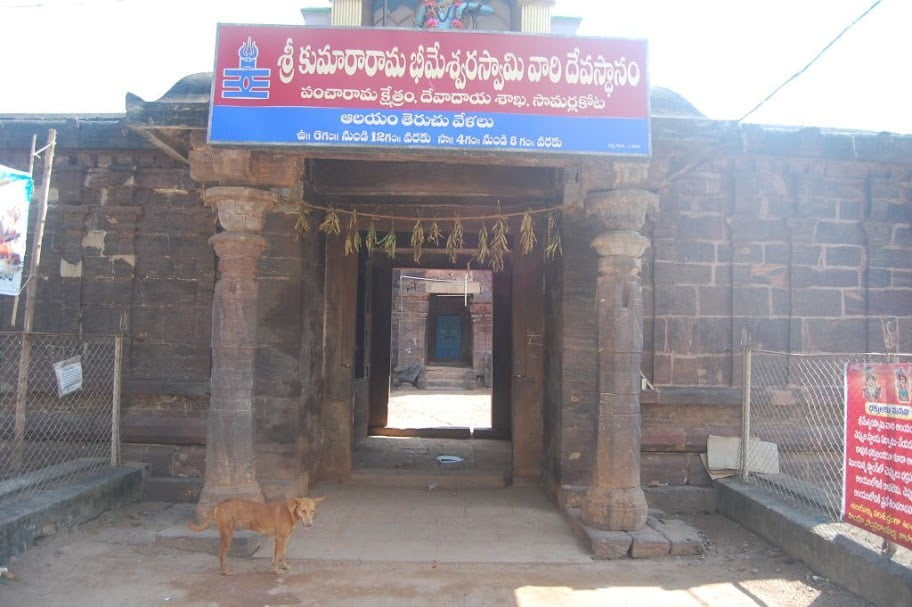Bhimavara Kshetram with its famous temple of Kumararama – Bhimesvara. The village was known in the past as Chalukya Bhimavaram according to the inscriptions found in the temple.
Shrine’s History
Sri Kumara Bhimeshwara Swamy Temple was built by Chalukya King Chalukya Bhima between 892 and 922 in Dravidian style. Later the Kakatiya rulers have renovated this temple in the period of 1340-1466. This temple is similar to Draksharamam. The Lingam is 14 feet high in white colour here resembles its rarity. There are the shrines for Kala Bhairava and Goddess Bala Tripura Sundari here. Edicts were scripted into the pillars between 1147 and 1494. They have lists of the gifts given through ages for the temple. According to Puranas, this temple is known as a Yogakshetram. A person should have the opportunity to visit this temple.
Architectural Relevance of This Shrine
The Bhimesvara temple at Samalkot is similar in architecture to that of the Bhimesvara temple at Daksharama. The temple is surrounded by two prakara walls built of dressed sandstones. The outer prakara wall is pierced by gopura – entrance on all the four sides. The four gopura – dvaras have ardha – mandapas on either side. The inner enclosure wall is divided horizontally into two sections separated by a cornice. It has a two-storeyed pillared mandapa running all the inner side. The main shrine is a free standing monument lying at the centre of the inner enclosure. The temple is a rectangular structure and has two storeys. The limestone Linga, installed in the shrine, is so tall that it rises from the pedestal on the ground floor and enters the second floor by piercing the roof, where the Rudrabhaga is worshipped. The present Vimana of the main shrine has been renovated and is covered with thick plaster. It consists of flat pattas, the row of geese kutas, salas, simhalalatas, lotuses and kalasa. It is a dvitala vimana of the Dravida order with regional variations. Like in Daksharama, a miniature temple model, found in the courtyard of the temple, shows the whole temple with all the architectural details, possibly used as the model before erecting the temple ranging from AD 1147 to 1494, recording gifts made to this temple. These epigraphs refer to the construction of mukhamandapa at the Eastern entrance in AD 1394. Further, the erection of the additional structures like Srimukhamandapam and niluvu mandapam on top of it in AD 1422 are also mentioned in the inscriptions.
Shrine’s Map Location and How to Go There
By Road
Government and private bus services are available from all major places in Andhra Pradesh and Telangana to Kumararama Temple in Samalkot.
By Rail
Nearest railway station to Kumararama Temple is Samalkot Railway Station which is 1km away. Bus and Auto services are available to access the temple.
By Air
The nearest airport is Rajahmundry Airport which is 46km away. Bus and Taxi services are available to reach Kumararama Temple.
Shrine Timings
Temple timings are from 6.00am to 12.00pm and from 4.00pm to 8.00pm.
Events Celebrated at This Shrine
Maha Shiva Rathri is grandly celebrated in this temple. During Karthika and Margashira Masam daily Abhishekam is carried out. There will be Kalyana Mahotsav during Magha Bahula Ekadashi time.
